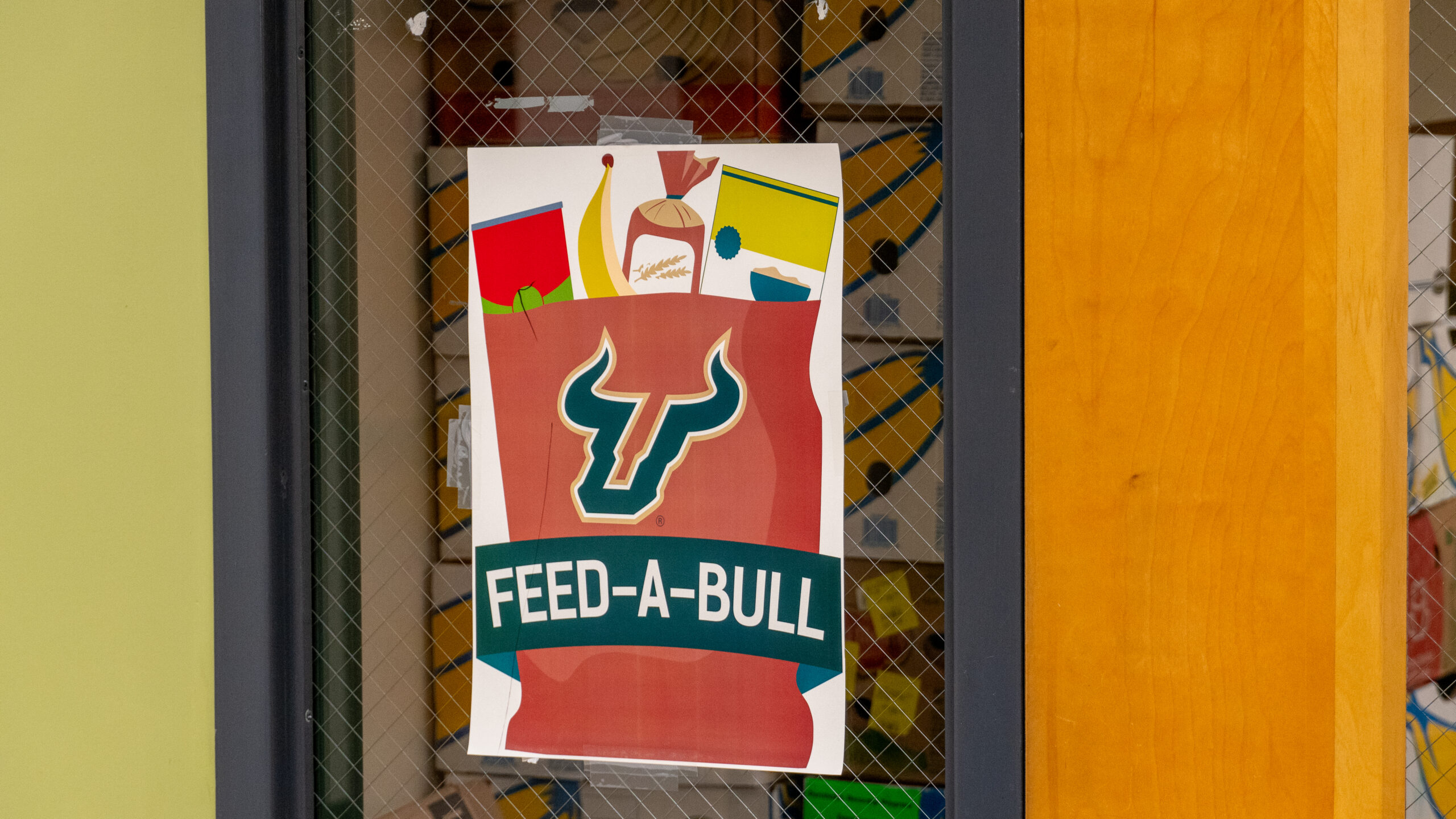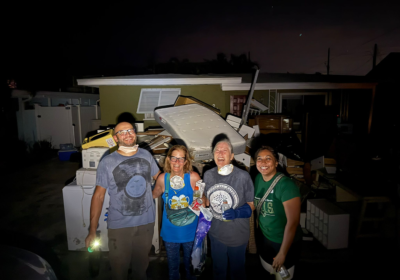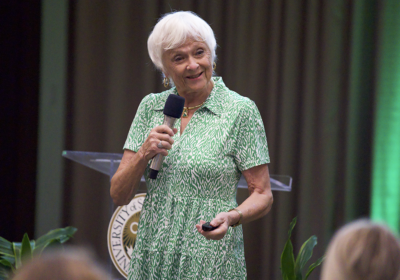Feed-a-Bull pantry sees increasing demand from past years

The Feed-a-Bull pantry is experiencing an increase in demand from students compared to previous years, according to Program Director Katie Webster.
The organization serves as supplemental food assistance to offset grocery expenses, Webster said. The pantry is already close to reaching the total number of visits typically seen in one school year.
From academic year 2021-22 to 2023-24, the total visits and pounds of food given to students for each school year are:
- 2021-22: 1,300 total visits, 16,000 pounds of food
- 2022-23: 4,770 total visits, 38,000 pounds of food
- First four weeks 2023-24: 1,000 total visits, 6,000 pounds of food (since Aug. 21)
Every category of food is in demand, including canned fruit, vegetables, snack or breakfast items, beans, tuna, chicken, rice, pasta, soup and tomato products, Webster said.
There are food limitations in place to help accommodate the demand. Students that come in can only retrieve a limited amount of certain types of food like fruit, vegetables and proteins. This helps with the rising demand so that the inventory is more controlled, Webster said.
Webster attributes the increased traffic to the pantry’s promotional efforts and USF’s rising student population. They have been featured on Bay 9 News and also have a donation page on USF Foundation, where donors are able to give back to the community.
She said she wanted Feed-a-Bull to move into a larger pantry space, but could not do so due to inadequate funding.
The addition of more shelves would help to accommodate the influx of student demand, Webster said.
The need for a larger pantry space is also about implementing additional resources for students.
There are new programs that Feed-a-Bull wants to offer that require more space, Webster said, such as adding a station for students that want to apply for Supplemental Nutrition Assistance Program (SNAP) benefits.
The pantry receives standard biweekly deliveries. But to keep up with demand, the program has already ordered emergency deliveries from Feeding Tampa Bay to increase their inventory.
Webster said she requested an emergency delivery within the first three weeks of this semester. The quantity of each delivery from Feeding Tampa Bay can sum up to 1500-2000 pounds of food and 100 pounds for produce, Webster said.
Webster has been keeping up with supply and demand by adjusting the pantry’s inventory as needed and ordering adequate amounts of food. She said a lot of what is needed generally has a price associated with it, clearing the misconceptions about the food being free.
Success at this year’s Charit-a-Bull, a food drive hosted at USF, would help the pantry manage demand, Webster said. The drive comes every fall semester with homecoming activities. The pantry partners with the organization in hopes of receiving donations and access to more resources.
About two out of five of USF students are facing food insecurity, according to USF’s food resources website. Because of this and its large student population, many would benefit from Feed-a-Bull and their resources at the pantry, Webster said.
“The utilization will continue to increase as more students learn that Feed-A-Bull is an available resource for any student struggling to afford adequate food for themselves,” she said.






